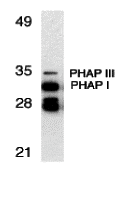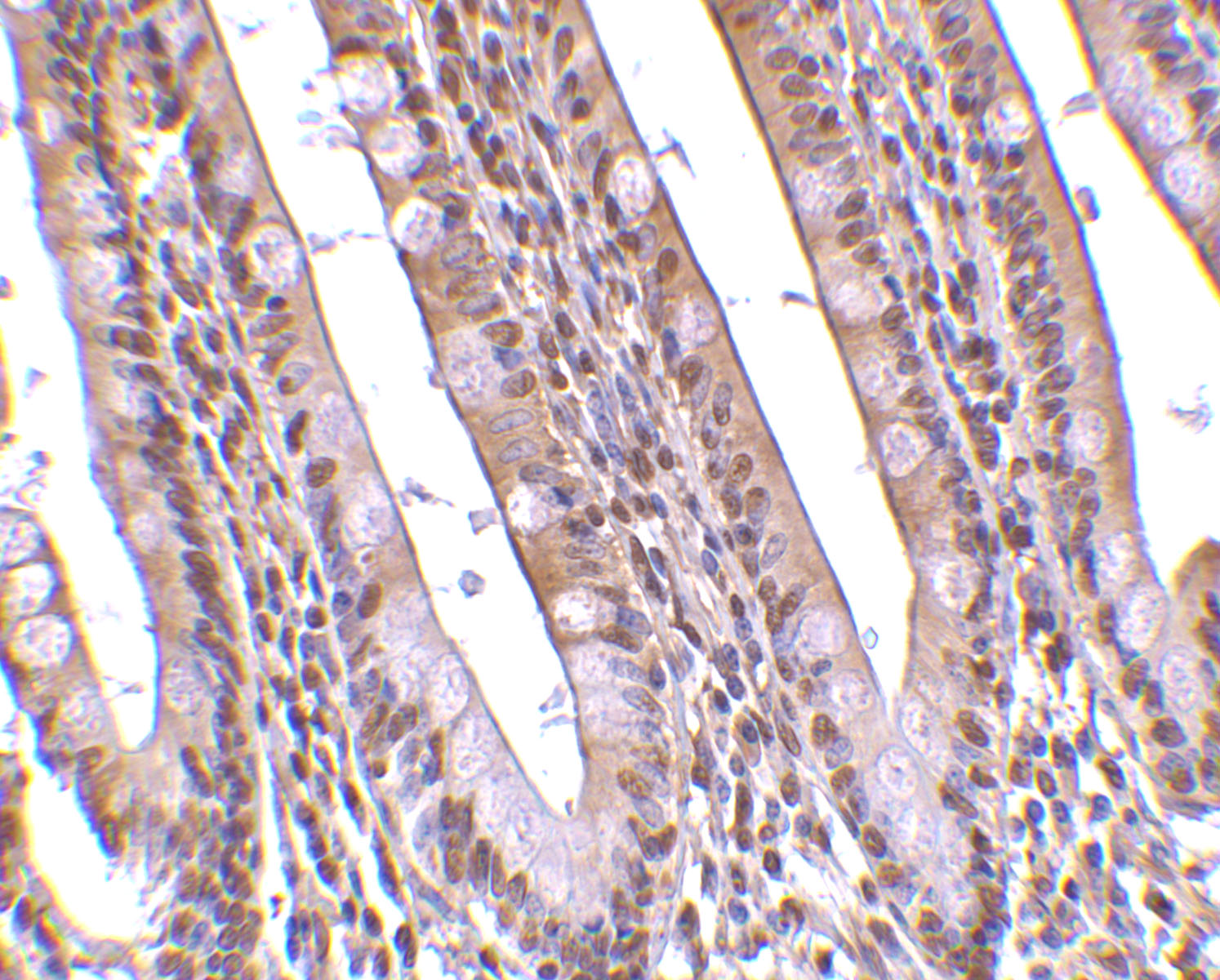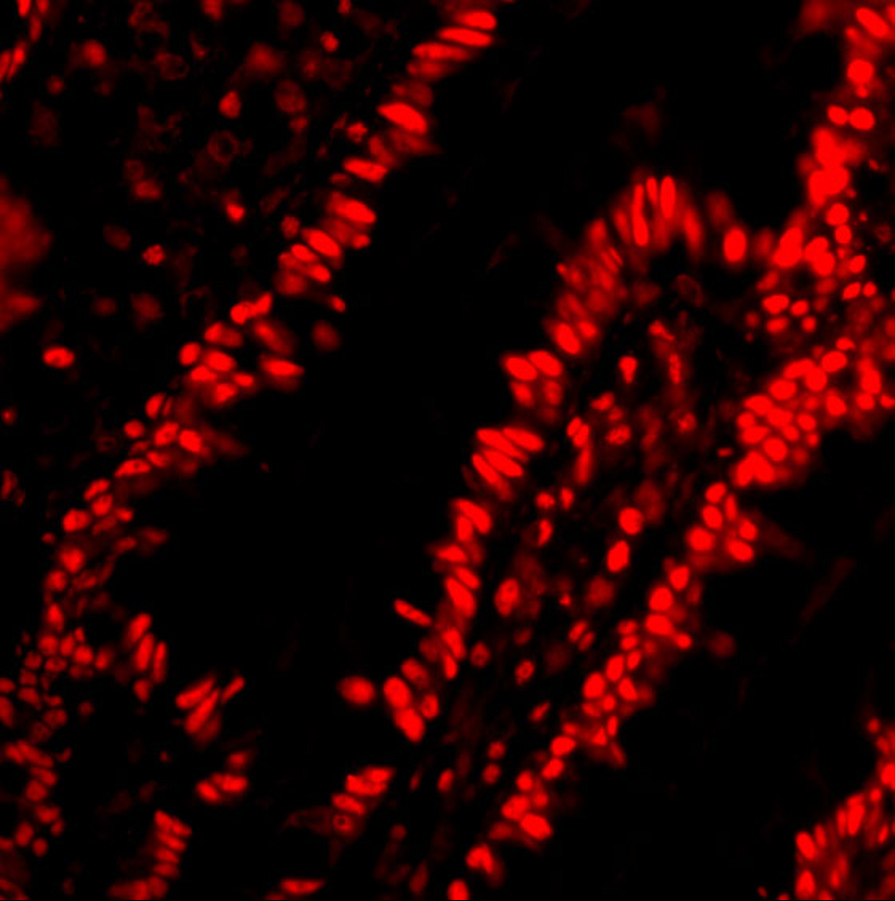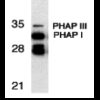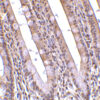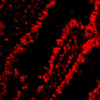Anti-PHAP (CT) Antibody (11090)
$445.00
| Host | Quantity | Applications | Species Reactivity | Data Sheet | |
|---|---|---|---|---|---|
| Rabbit | 100ug | ELISA,WB,IHC-P,IF | Human, Mouse, Rat |  |
SKU: 11090
Categories: Antibody Products, Apoptosis Antibodies, Products
Overview
Product Name Anti-PHAP (CT) Antibody (11090)
Description Anti-PHAP (CT) Rabbit Polyclonal Antibody
Target PHAP (CT)
Species Reactivity Human, Mouse, Rat
Applications ELISA,WB,IHC-P,IF
Host Rabbit
Clonality Polyclonal
Isotype IgG
Immunogen Synthetic peptide corresponding to amino acids near the carboxy terminus of human PHAP (accession no. P39687).
Properties
Form Liquid
Concentration Lot Specific
Formulation PBS, pH 7.4.
Buffer Formulation Phosphate Buffered Saline
Buffer pH pH 7.4
Format Purified
Purification Purified by peptide immuno-affinity chromatography
Specificity Information
Specificity This antibody recognizes human, mouse and rat PHAP I (32kDa) and PHAP III (35kDa).
Target Name Acidic leucine-rich nuclear phosphoprotein 32 family member A
Target ID PHAP (CT)
Uniprot ID P39687
Alternative Names Acidic nuclear phosphoprotein pp32, pp32, Leucine-rich acidic nuclear protein, LANP, Mapmodulin, Potent heat-stable protein phosphatase 2A inhibitor I1PP2A, Putative HLA-DR-associated protein I, PHAPI
Gene Name ANP32A
Gene ID 8125
Accession Number NP_006296.1
Sequence Location Nucleus, Cytoplasm, Endoplasmic reticulum. Note=Translocates to the cytoplasm during the process of neuritogenesis (By similarity). Shuttles between nucleus and cytoplasm.
Biological Function Multifunctional protein that is involved in the regulation of many processes including tumor suppression, apoptosis, cell cycle progression or transcription (PubMed:16341127, PubMed:11360199, PubMed:18439902, PubMed:10400610). Promotes apoptosis by favouring the activation of caspase-9/CASP9 and allowing apoptosome formation (PubMed:18439902). In addition, plays a role in the modulation of histone acetylation and transcription as part of the INHAT (inhibitor of histone acetyltransferases) complex. Inhibits the histone-acetyltranferase activity of EP300/CREBBP (CREB-binding protein) and EP300/CREBBP-associated factor by histone masking (PubMed:11830591). Preferentially binds to unmodified histone H3 and sterically inhibiting its acetylation and phosphorylation leading to cell growth inhibition (PubMed:16341127). Participates in other biochemical processes such as regulation of mRNA nuclear-to-cytoplasmic translocation and stability by its association with ELAVL1 (Hu-antigen R) (PubMed:18180367). Plays a role in E4F1-mediated transcriptional repression as well as inhibition of protein phosphatase 2A (PubMed:15642345, PubMed:17557114). {PubMed:10400610, PubMed:11360199, PubMed:11830591, PubMed:15642345, PubMed:16341127, PubMed:17557114, PubMed:18180367, PubMed:18439902}.; (Microbial infection) Plays an essential role in influenza A, B and C viral genome replication (PubMed:32694517, PubMed:33045004, PubMed:33208942, PubMed:30666459). Mechanistically, mediates the assembly of the viral replicase asymmetric dimers composed of PB1, PB2 and PA via its N-terminal region (PubMed:33208942). Plays also an essential role in foamy virus mRNA export from the nucleus (PubMed:21159877). {PubMed:21159877, PubMed:30666459, PubMed:32694517, PubMed:33045004, PubMed:33208942}.
Research Areas Apoptosis
Background The PHAP proteins (tumor suppressor putative HLA-DR associated proteins) are important regulators of mitochondrial apoptosis. PHAP facilitates apoptosome- mediated caspase-9 activation to stimulate the mitochondrial apoptosis pathway. In addition, PHAP opposes both Ras- and myc- mediated cell transformation.
Application Images




Description Western blot analysis of PHAP expression in human Raji cell llysate with PHAP antibody at 1 ug/mL.

Description Immunohistochemistry of PHAP in human small intestine tissue with PHAP antibody at 10 ug/mL.

Description Immunofluorescence of PHAP in human small intestine tissue with PHAP antibody at 20 ug/mL.
Handling
Storage This antibody is stable for at least one (1) year at -20°C. Avoid multiple freeze-thaw cycles.
Dilution Instructions Dilute in PBS or medium which is identical to that used in the assay system.
Application Instructions Western Blot: Use at 1ug/ml.
Positive control: Raji cell lysate
Immunohistochemistry: use at 10ug/ml.
These are recommended concentrations.
Enduser should determine optimal concentrations for their applications.
Positive control: Raji cell lysate
Immunohistochemistry: use at 10ug/ml.
These are recommended concentrations.
Enduser should determine optimal concentrations for their applications.
References & Data Sheet
Data Sheet  Download PDF Data Sheet
Download PDF Data Sheet
 Download PDF Data Sheet
Download PDF Data Sheet

